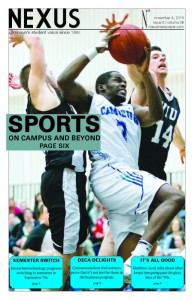Imagine being a high-school student, getting lunch, struggling to get to class, and dealing with judgmental teachers. Sound familiar?
Now imagine being a student with cerebral palsy. This condition affects motor skills, muscle tone, and movement, and can lead to many other health issues impacting vision, hearing, speech, and learning.
So, add cerebral palsy on top of the list of typical high-school pressures, and you’ve definitely got a challenge at hand. The real issue here isn’t the adequate staffing, facilities, or funding, but the social aspect of going through school alone.
I have a friend, Ciarra, dealing with cerebral palsy, learning disabilities, and social stigma. Ciarra, who has now finished high school, would go weeks at school without a single peer acknowledging her, engaging her, or even simply touching her hand or shoulder.

This exclusion was painful, and the hardship of going through high school with mainly staff, workers, and health-care aides as “friends” is not something she will easily forget.
I understand how, in an encounter with someone you’ve never met before who uses a wheelchair or has a disability, interaction may be stiff, forced, or uncomfortable at first. Also, it may be hard to judge the degree of their impairment. One of the things Ciarra hated the most was when children would walk up to her mother or worker and ask, “What’s wrong with her?”
All Ciarra wanted was to be addressed directly.
It’s easy to notice three kinds of people in the community when there is someone with a disability.
There are people who stare, point, and whisper to whomever they’re with and make the situation unbearably uncomfortable.
Then you get the people who, in fear of getting trapped in an awkward situation, act like the other person is completely invisible. This typically involves averted eye contact and zero acknowledgment. Also, they don’t typically respect the space bubble that someone who uses a wheelchair needs.
Then there is the preferred interaction, where the person knows how to treat the situation correctly: respecting the unique requirements that person may need, not judging or making anyone feel uncomfortable, and, beyond that, treating everyone the same. If you generally nod and smile at people, keep that up; this is how you create inclusion in the community.
Treating someone superficially and judging their intellect by their apparent disabilities is something that, as a culture we need to change. Just because someone thinks, moves, or speaks differently than you do doesn’t mean they should be alienated from social interactions and opportunities.
People need to be kind and respectful to everyone else they see in their day, regardless of whether they have a disability.
You may never know the impact just a simple “hello” will have on that person, so why not reach out and make someone’s day better?
